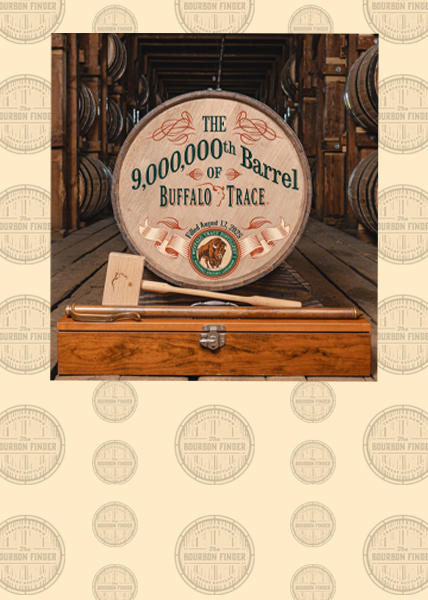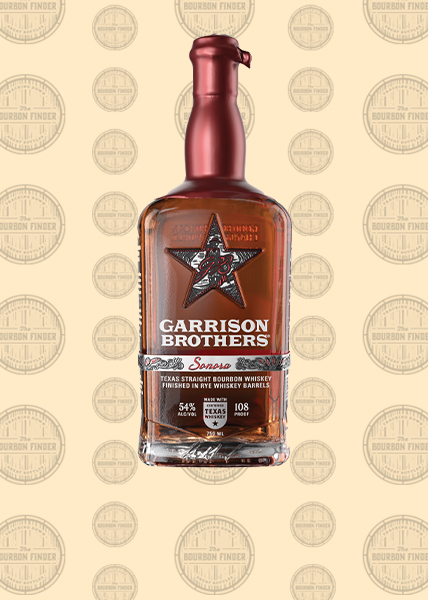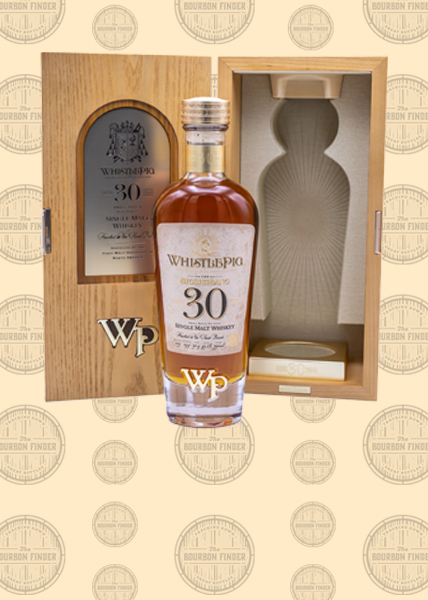What is the Difference Between Bourbon and Whiskey?
As a whiskey enthusiast, and avid bourbon collector, it can be easy to take for granted the amassment of factoids and tidbits of knowledge I have gleaned along my journey; additionally, sharing both the interesting history as well as the intricacies of America’s native spirit are some of the chief reasons that shaped me into an enthusiast. One of the few things as rewarding as sharing great bourbon with a friend, is sharing knowledge of the bourbon itself. But what exactly is bourbon? Is there a difference between bourbon and whiskey? Let’s dig into this question and break down the differences between whiskey and bourbon.

Photo: Buffalo Trace Distillery
WHAT IS BOURBON?
All bourbon is whiskey; however, bourbon is a protected classification of whiskey that must be distilled from a fermented mash that is made primarily from corn. What does this mean exactly?
In 1964 Congress recognized Bourbon as a “distinctive product of the United States” which was a huge step forward for American Whiskey, but it brought along with it some rules that help us define exactly what bourbon is.
- First and foremost, bourbon must be produced in the United States.
- Bourbon must be made from at least 51% corn.
- Bourbon must be distilled to no higher than 80% ABV (160 proof)
- Bourbon must be aged in new, charred oak containers.
- Bourbon must go into the container at no more than 62.5% ABV (125 proof)
- Bourbon must be bottled at 40% ABV (80 proof) or higher

Four Roses 2020 Limited Edition Small Batch Bourbon (photo: Four Roses Bourbon)
There are additional rules and designations within bourbon and other American whiskeys which we will cover in the next segment.
SO ALL BOURBON IS WHISKEY. IS ALL WHISKEY BOURBON?
First and foremost: while all bourbon is indeed whiskey–all whiskey is not (and cannot be) bourbon. American rye, for example, adheres to rules nearly identical to bourbon–save for the mashbill being primarily (51% or more) rye rather than corn. Let’s go a step further with American whiskeys and look at designations within both American Rye and Bourbon.
All whiskey is not created equal. I don’t mean this to be derogatory toward any particular classification, category, or type of whiskey. What I mean is simple. Within the category of whiskey there are many designations that range in legal rigidity, and impact not only what goes into the bottle, but what can be placed upon the label.
WHAT IS STRAIGHT BOURBON?
Bourbon is inherently protected in that no additives may be placed into the product. This means other types of alcohol, flavors, or colors cannot be placed into a whiskey that will bear Bourbon on the label. While this inherent protection is great, it isn’t uniform in every whiskey, and it can take a bit of education on the consumer’s part to know exactly what is in the bottle they are purchasing.
Straight Bourbon is (quite obviously) bourbon; however, to bear the designation ‘Straight’ it must be aged a minimum of two years (and meet all other legal requirements of the spirit). If a product is labeled as ‘Straight Bourbon’ and is less than four years old, it must bear an age-statement. This allows the consumer to know exactly what they are buying.
WHAT IS STRAIGHT RYE?
This is an important distinction in American Rye whiskey, and I want to discuss it briefly as it will help create a stronger foundation of American whiskey knowledge.
American Rye whiskey does not enjoy the same inherent protection as Bourbon. Rye whiskey may, in fact, contain coloring, flavoring, or blending materials (up to 2.5%). Knowing this will make a difference to someone considering a bottle of rye whiskey that does not bear the designation ‘Straight’ on the label.
Straight Rye whiskey must adhere to all of the previously listed laws, be free from any additives, and must also be at least two years old (just like bourbon).

Four Roses Warehouse (photo: Four Roses Bourbon)
WHAT OTHER TYPES OF NON-BOURBON WHISKEY ARE THERE?
Bourbon is such a great product for many reasons: it’s distinctive to the United States, it has roots going back to pre-Prohibition, and it has persevered through incredibly tough economic times to rise to heights never before imagined. While bourbon is seeing growth and sales in stratospheric amounts, there are other categories of whiskey out there.
As we discussed in the beginning, all bourbon is whiskey but not all whiskey is bourbon. Along with bourbon’s growth–you could argue that there is a certain amount of coattail-riding going on–other whiskey categories have evolved or grown. We’ve discussed American Rye whiskey in some detail, but now let’s also consider other whiskey classifications you will find in the American Whiskey market.
CORN WHISKEY
Whereas bourbon is a whiskey produced of 51% or more corn in it’s mashbill (the fermented grains that make up the whiskey), other whiskeys may contain corn but lack the designation of bourbon.
American corn whiskey is legally defined, and it’s labeling is subject to rules as strict as both American Rye and Bourbon–although there are some very distinct differences between the two corn-based whiskeys.
- Corn whiskey must be made of at least 80% corn.
- Corn whiskey must not be distilled higher than 80% ABV (160 proof)
- It does not require aging, but if aged it must be aged in either a used charred-oak container, or a new non-charred oak container.

Corn being delivered to a distillery (photo: Buffalo Trace Distillery)
WHISKEY SPECIALTIES & LIQUEURS
Other classifications can be very divisive in the world of whiskey enthusiasts. Products that include flavoring or finishing in casks from other spirits have exploded in popularity among more casual drinkers, as well as displeasure from the enthusiast crowd. I bring this up because products of this nature cannot be called bourbon. I know, I know, there are products out there bearing designations such as “Kentucky Straight Bourbon Finished in Port Wine Barrels” and other such things. Let’s wrap up our comparison between bourbon and whiskey by exploring the darker side of this category: whiskey specialties.

Image from TTB Online
As of this writing, there is no law preventing the aforementioned style of labeling a whiskey specialty. If the product was Kentucky Straight Bourbon Whiskey (KSBW) before it was aged in an ex-wine cask, it can be labeled as mentioned above (even if the final product is no longer technically KSBW). If this changes in coming weeks, months, or years I will happily amend this article to reflect that. For now I think the educated consumer needs only to understand that regardless of the prefixed ‘Kentucky Straight Bourbon Whiskey’, the end product will most certainly carry a flavor that is impacted by it’s final aging, flavoring, or sweetener that has been added.
Flavored whiskeys often draw the ire of bourbon geeks, critics, and enthusiasts alike because these products don’t walk the line as elegantly as some finished products might. Look closely at the label of Jim Beam’s Red Stag for an example of clever marketing that shows the subtle (but mandatory) description “Black Cherry Liqueur Infused With Kentucky Straight Bourbon Whiskey”. This tells the consumer the product has KSBW in it; however, the product itself cannot be labeled as Bourbon. Thus we have a whiskey specialty, which is something of an all-encompassing term for something that cannot truly be labeled as a whiskey.

Image from TTB Online
These distinctions may seem trivial, but they represent an extremely thin line of protection for our beloved bourbon. Many enthusiasts, writers, and critics are rather vocal in their opinion about liquor that falls under this jurisdiction, simply due to the fact that these products–if not properly controlled and labeled–can confuse consumers and muddy the waters of what bourbon really is.
I would not be surprised to see this grow as an even more hotly debated topic in the short term, and to see lobbying for changes on the legality of whiskey specialties (and other liqueurs) that seemingly benefit from the ambiguous use of the word Bourbon.
Final thoughts…
I created this website as a means of not only exploring whiskey, but also as a public way of sharing it. Sharing whiskey is important to many whiskey enthusiasts (who may identify as ‘whiskey geeks’) who are interested in opening doors for their friends and family.
It is my hope that this article will serve folks who are just beginning a whiskey journey as much as those who have tried nearly everything on the shelves at their local liquor stores, as this is my way of sharing the whiskey world with you. Now let’s have a pour of bourbon. Cheers!






Leave a Reply